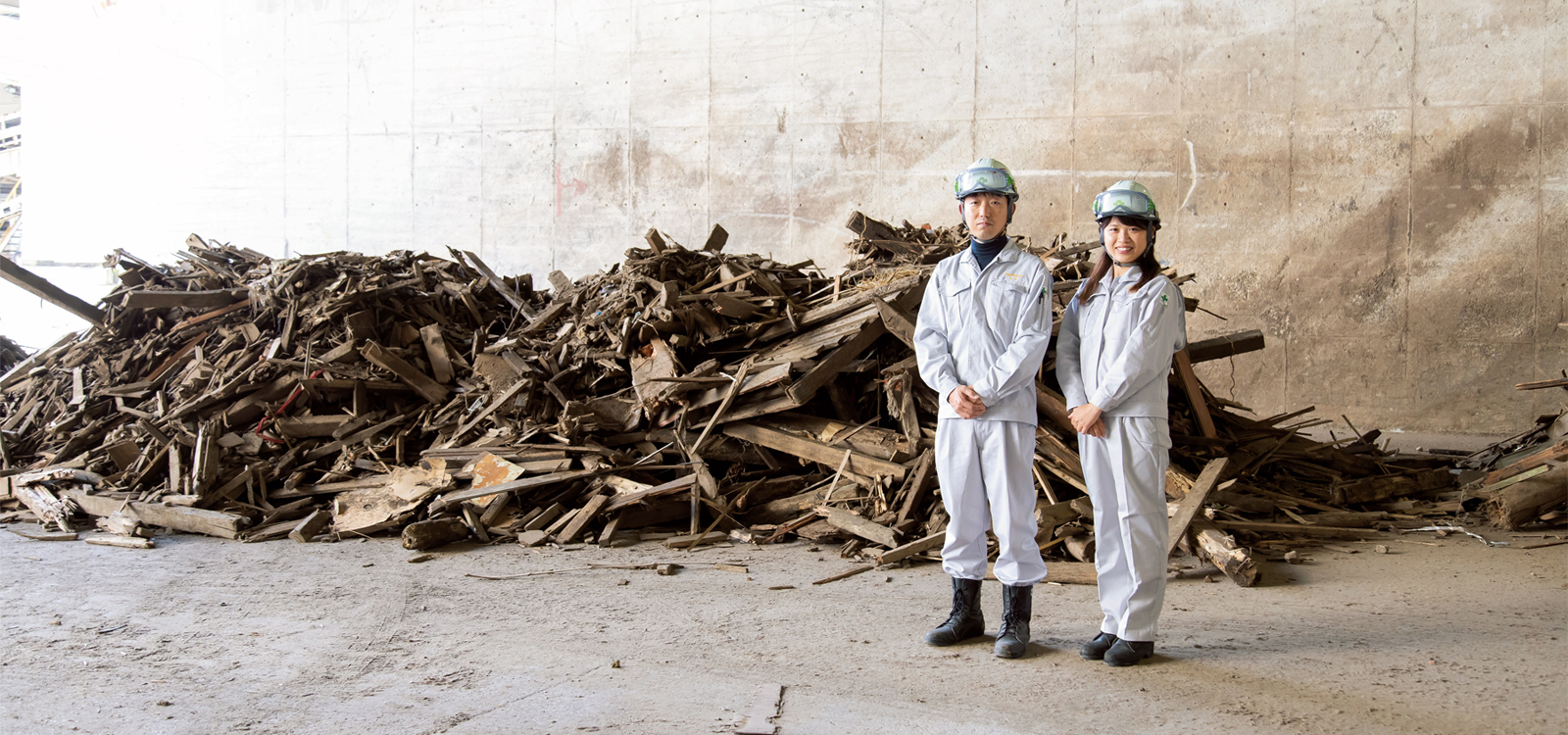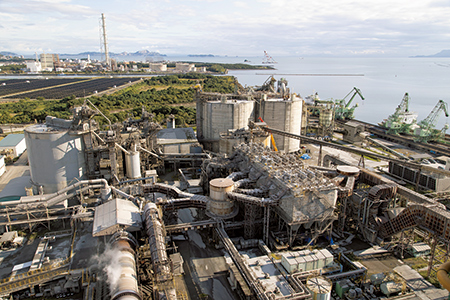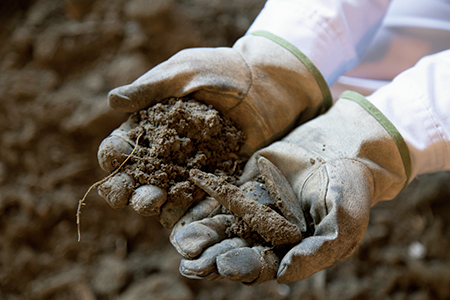Share the aspirations of people working for the Sumitomo Group
who are devoting their energy and talent to socially beneficial endeavors
in a host of fascinating fields.



In recent years, an upward tick in the number of natural disasters striking Japan has exacerbated the problem posed by disaster waste. As a result of torrential rain in western Japan in July 2018, the region was confronted with some 2 million tons of disaster waste. Cement makers are fulfilling a leading role in processing this mountain of disaster waste.
Sumitomo Osaka Cement is handling disaster waste from three local governments—Okayama Prefecture, Kure City in Hiroshima Prefecture, and Uwajima City of Ehime Prefecture—affected by the July 2018 downpour. A vast quantity of waste is used as raw material in cement making and as fuel in the cement production process. Over 500 kilograms of waste and byproducts such as slag is used in the production of each ton of cement at Sumitomo Osaka Cement. In view of this high ratio of waste used in cement production, Sumitomo Osaka Cement was able to make good use of the disaster waste.
“Recycling disaster waste as raw materials and fuel is part of our support for the disaster-stricken areas. Many of our employees come from those areas and we are delighted to offer a helping hand through our business,” says Rikako Ito of the Administration Department, which is in charge of accepting waste.
“Close collaboration with local governments is indispensable because disaster waste contains a lot of foreign matter. More stringent control is required for processing disaster waste than for other waste. At the outset, it was all new to us but we have steadily cultivated the know-how needed to accept and process disaster waste safely and efficiently,” says Takashi Saito of the Environmental Department, which liaises with local governments. “Inevitably, disasters will continue to occur. Our initiatives help ensure readiness for future disasters.”
Reprinted from SUMITOMO QUARTERLY NO.159